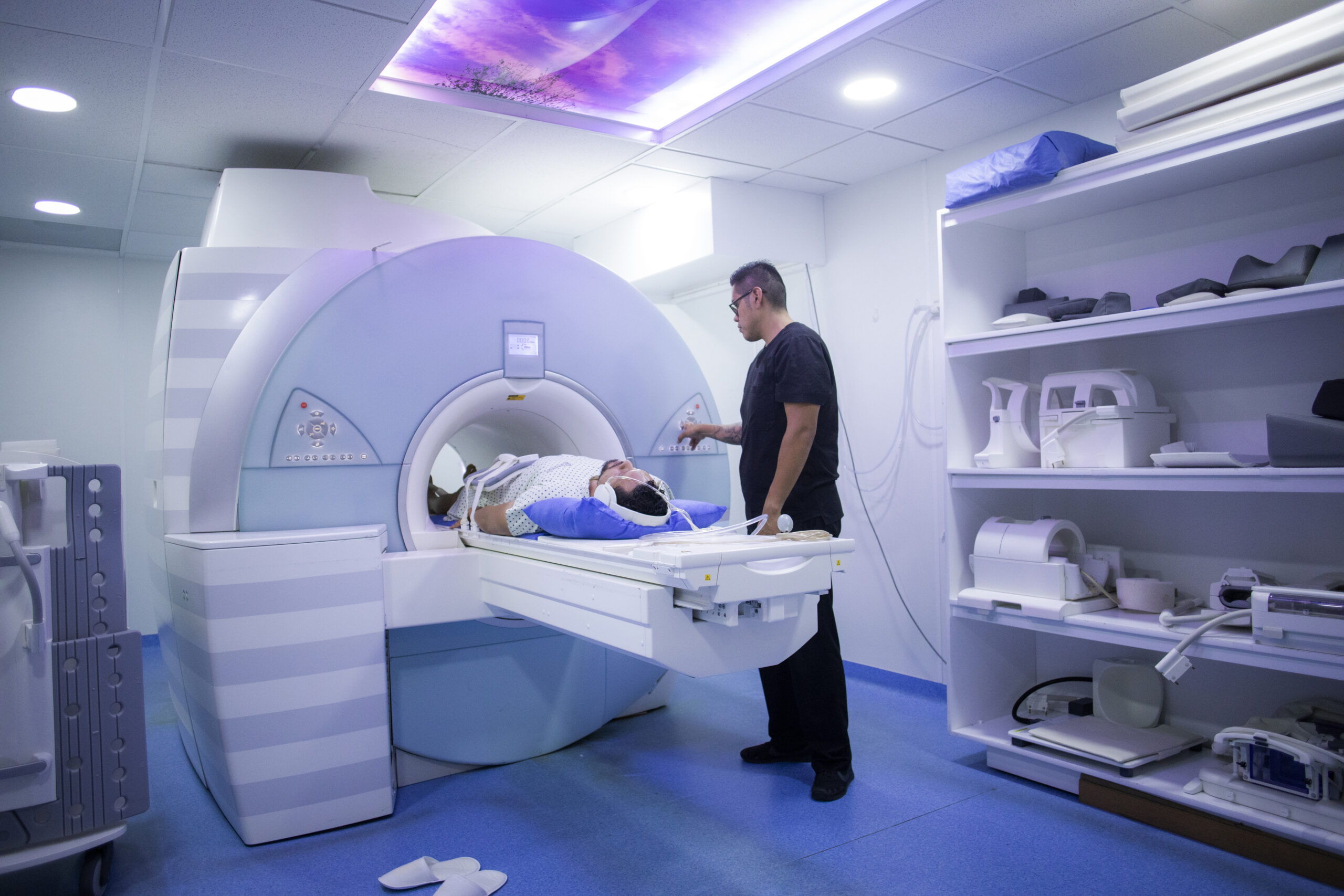Who Will Read My Scan? A Fair and Important Question

To the layman, diagnostic imaging test results can be as difficult to decipher as a Rorschach test. However, to a highly-trained radiologist, each piece of diagnostic data is a treasure trove of information to be unlocked and analyzed. What may look like nothing more than a series of blobs in shades of gray to the average person may look like a torn rotator cuff in the shoulder of an athlete to a radiologist.
In many ways, the practical application of radiology and diagnostic imaging is all about making informed interpretations. However, unlike abstract art theory, correctly interpreting diagnostic data could mean the difference between life and death. That’s why radiologists are held to such high standards of training and practice.That’s also why making sure the appropriate doctor is reading your radiographic exam is critical. Where a clinician may detect nothing at all in a seemingly normal set of imaging data, a radiologist can see something potentially of consequence.
Who Is An Effective Radiologist?
One With Strong Credentials
The training of a radiologist is rigorous and thorough and typically takes 13 to 15 years. The radiologist is not the imaging technician who will be administering the tests. While a highly experienced imaging technician may be capable of identifying many common abnormalities, they ultimately are not qualified to offer an official diagnosis since they have not undergone the rigorous schooling and professional training as a radiologist.
"Effective communication is the most important role of a radiologist. A radiologist's primary job is not only to describe abnormal findings, but also to describe pertinent negatives, thus assuring the ordering physician that other possible sources of pathology have been excluded."
--- DR. CRISTIN DICKERSON, MD
Every MD or DO radiologist is also a physician and must undergo the same medical training, including an undergraduate degree followed by a four-year medical school which includes clinical rotations. Many radiologists then perform a clinical internship which qualifies them as a general practitioner, and they are then qualified to obtain their medical license.
After medical school or internship, radiology candidates must then complete an additional 4-year radiology residency program. Most radiologists take this long credentialing process one step further by choosing to be board-certified by the American Board of Radiology (ABR). Many radiologists then undergo a one or 2-year fellowship training program to specialize in a specific type of radiology such as women's imaging, neuroradiology, or musculoskeletal radiology.
Chiropractic radiologists typically have an undergraduate degree, 3 years of chiropractic school and 3 years of residency. Their training is limited to musculoskeletal exams. While they may be highly skilled at detecting a musculoskeletal issue, pathology in adjacent organs could conceivably be overlooked.
Some clinical doctors choose to read their own exams. Family practice and orthopedic doctors may read their own patients' x-rays. Neurologists may read their own patients' MRIs. There is a significant benefit in correlating the clinical and imaging findings, but again, findings in other body parts could potentially be missed.
One Who Demonstrates Professionalism
Most patients never lay eyes on the radiologist who reads his or her exam. In fact, a large proportion of exams are read remotely, by teleradiology. A few exams such as fluoroscopic gastrointestinal exams (barium swallows, upper gi's) and most procedures (biopsies, joint injections) do require the presence of a radiologist. Radiologists are trained to educate patients about the exams they are undergoing, explain any risks, and put the patients at ease.
Effective communication is the most important role of a radiologist. A radiologist's primary job is not only to describe abnormal findings, but also to describe pertinent negatives, thus assuring the ordering physician that other possible sources of pathology have been excluded.
Radiologists attempt to provide unbiased professional advice with a focus on providing actionable and useful, evidence-based information. However, it is important to understand that their findings must typically be correlated by the ordering physician with clinical and other ancillary testing findings and patient circumstances and wishes.
One Who Is Available For Consultation
An effective radiologist is not only a great communicator but also one who makes himself or herself available to the referring physician as a consultant. Referring physicians often consult with radiologists even before the exam is ordered, to assure the best exam for the specific clinical circumstance is obtained, to find alternative testing options when there are complicating factors like medical devices, claustrophobia, and allergies. Those physicians may also want to convey additional testing results and discuss how those might impact the radiographic diagnosis. Referring doctors might also want to review the images themselves with the radiologist, especially when surgical intervention is planned.
How Do I Know?
If a referring physician sends you to a specific imaging center, it is fair to ask why. Sometimes the reason is convenience and known quality. Sometimes the reason is a relationship with a trusted specific specialty radiologist. However, frequently they are financially incentivized by their association with a hospital or hold an ownership stake in a center.
Patients do have a right to choose their own imaging center. Ask the doctor why they want the exam performed on a 1.5T or 3T MRI or read by a subspecialty radiologist. Those answers can easily be integrated into comparison shopping for fair pricing of the needed exam.
The Green Imaging Difference
At Green Imaging, we are all about quality, transparency, and affordability. With Green Imaging you can save between 50 and 80 percent of your out-of-pocket costs for MRI, CT, ultrasounds, and other imaging services. Affordable MRIs on a 1.5T magnet start for as low as $250, compared with $1,600 or more at other imaging facilities in the Houston and other metropolitan areas in Texas.
Want your diagnostic medical images read by a well-qualified, professional, and available radiologist? Call Green Imaging today.









